This feature is taken from VICE magazine, v29n2: THE REASONS TO BE CHEERFUL ISSUE. To subscribe to four print issues each year, click here.
Around midnight, the town of Kandi was eerily still. I got into a wobbling toto and was quickly surrounded by wandering phantoms—their faces painted back and covered in glitter, carrying sickles that glinted in the street lamps, with garlands of blood-red hibiscus flowers clinging to their necks. Some were in full-body paint, depicting Shiva and his consort, Kali. To me, they looked less like gods and more like nightmares—part deity, part demon, complete chaos.
At dawn, the real craziness ensued. A horde of bare-chested men flooded into a thronged local temple, clutching real human skulls, while elsewhere people paraded lifeless toddlers that had been body-snatched from infant graves. These men are the ‘high priests’ of Gajon, a festival of renewal that celebrates the wiping away of last year’s pain and suffering and attempts to coax a bountiful crop from the earth. As they danced barefoot through the streets and across the temple grounds, the high priests seemed to physically convulse with devotion.

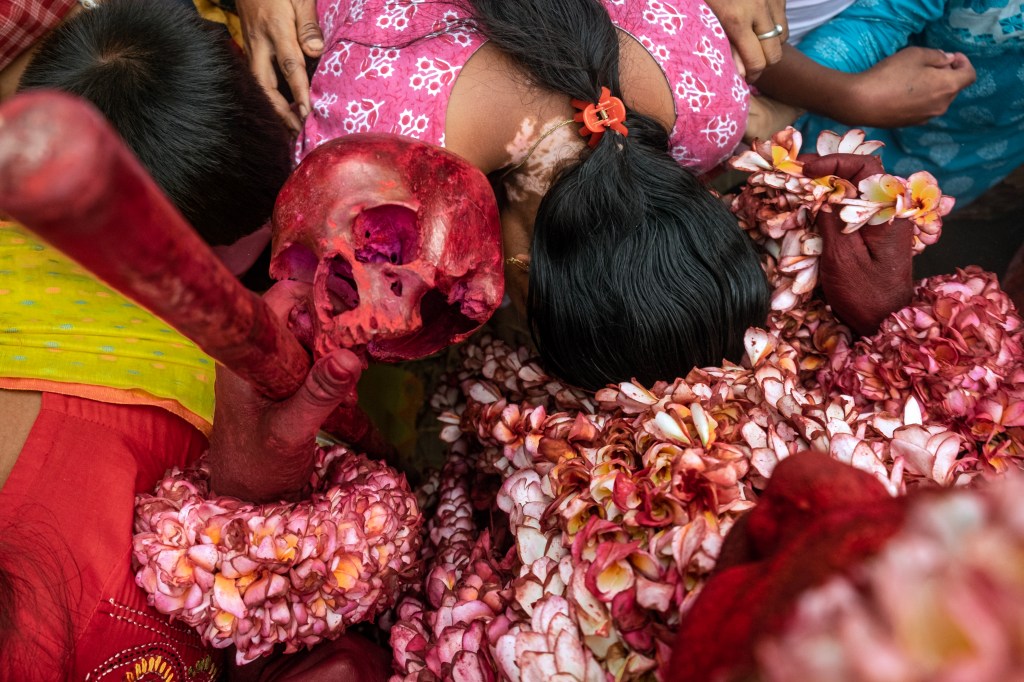
This isn’t just a Kandi thing. Gajon flows across small villages and towns in West Bengal like a fever dream—and people don’t just accept the rotting stench or the sight of human remains; they show up early, letting off firecrackers, fighting for the front row.
Rooftops, treetops, the edge of a thin risky wall; if it afforded them a view, it was a seat. Everyone was drawn by one thing: the arrival of the Dancing Skulls. Every corner of the temple was filled with people—children, some awake, others asleep in their mothers’ arms; young men sitting on rooftops; old women chanting softly; all eyes fixed ahead.
As night deepened, performance troupes breathed fire, lit crackers, setting the stage for something more primal to come. Then without warning, a surge of energy ripped through the crowd. There was a roar. The sun was coming up and the high priests had arrived.
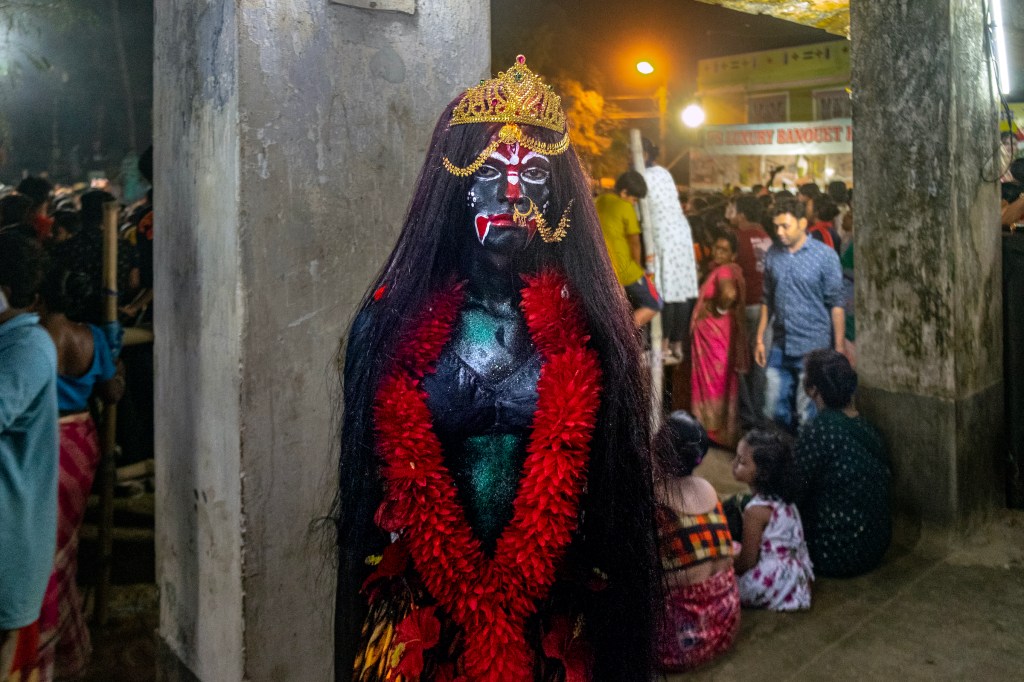
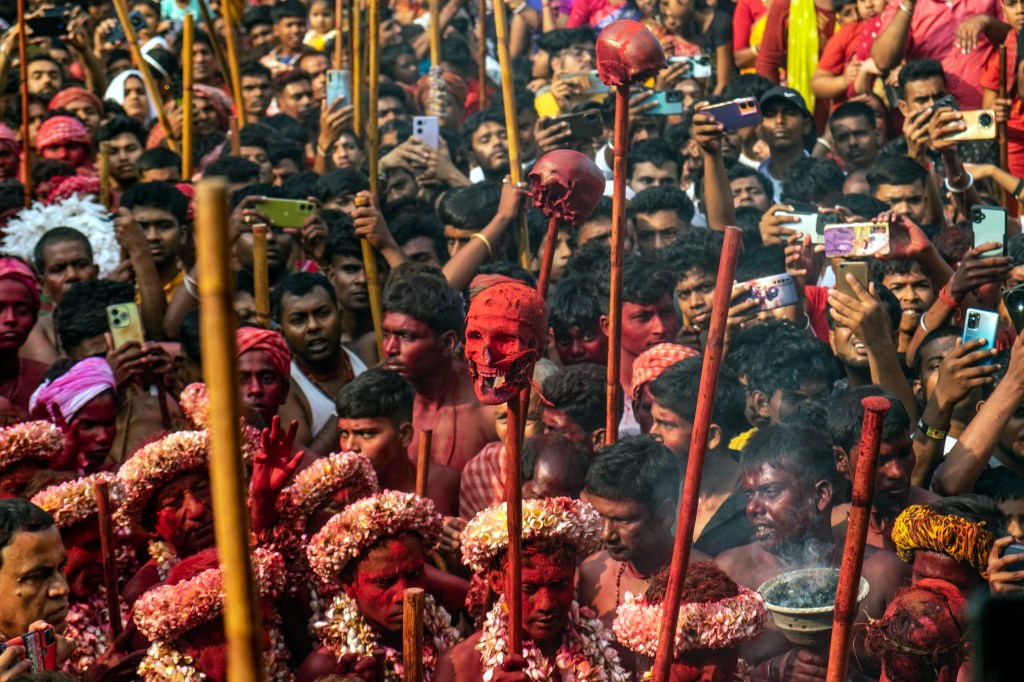
They came sprinting: elderly men with big eyes, torsos colored red with vermillion, wilting white flowers swaying from their necks. The crowd parted as one, granting them passage. I guess you don’t stand in the way of a dancing man who’s carrying a corpse in his hands or wearing someone’s skull for a hat.
Some raised their hands in worship to greet the skulls—many of which still boasted visible facial hair and skin—while others just raised their phones in the hope of making a viral reel. Some looked visibly uncomfortable. One or two might even have admitted to being spooked. But at no point did anyone leave. They’d stayed up till dawn for the spectacle.
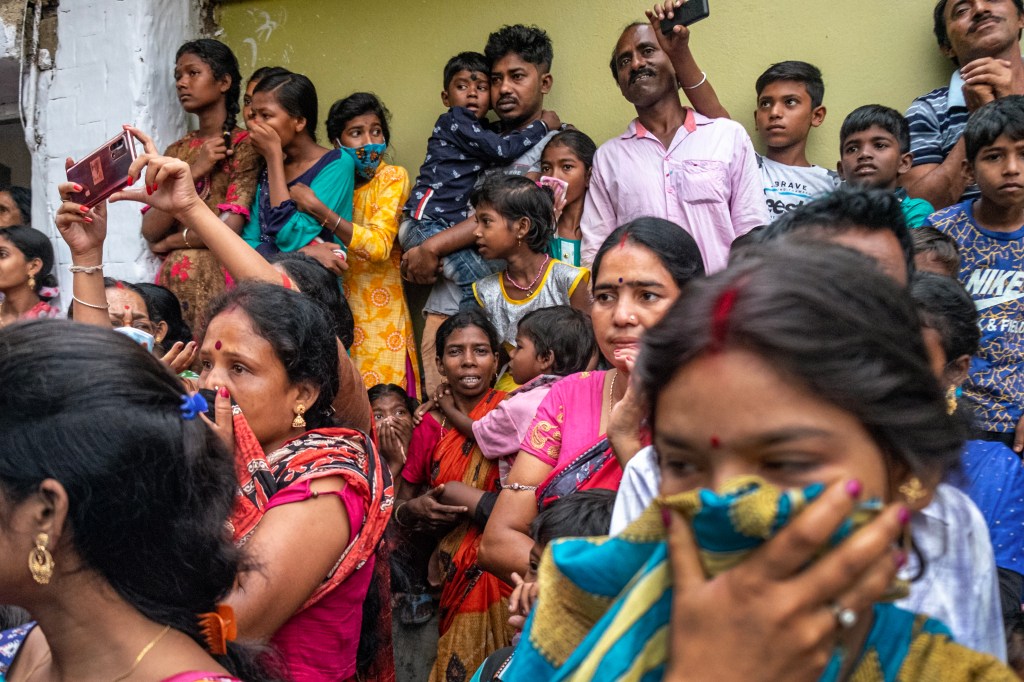
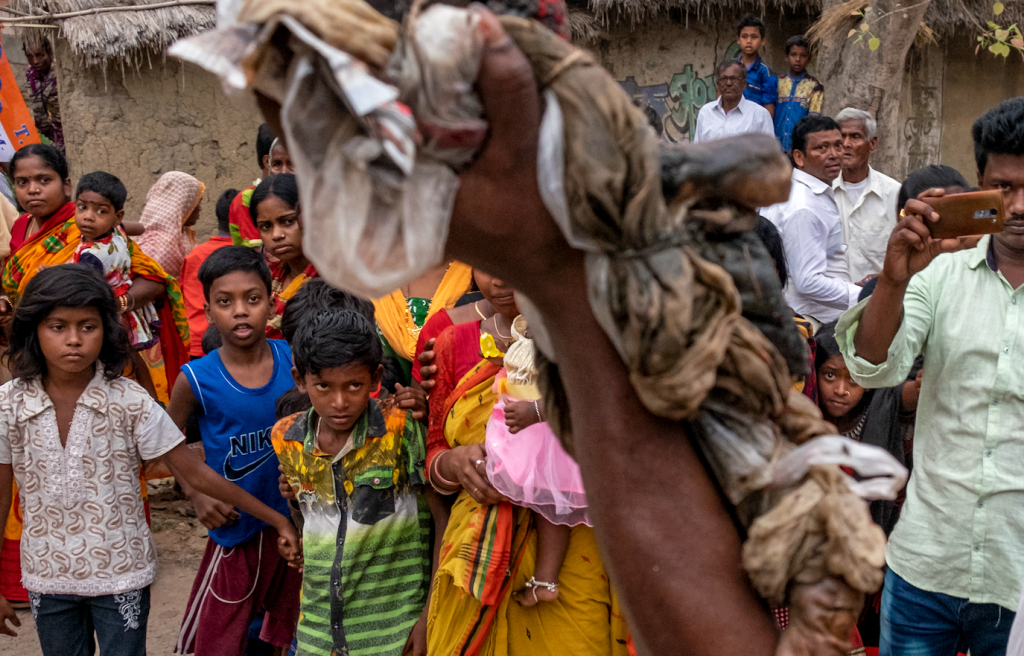
People went home with grainy videos, blurry photos, stories to share on WhatsApp groups for weeks to come. But the real memento is the aftertaste—of something ancient that reminds you how thin the veil really is between the living and the dead.
The police rarely involve themselves in Gojan for fear of sparking riots. This tradition started hundreds of years ago, so few villagers complain. While it may seem disrespectful, the parade of the dead bodies is seen as a celebration of life and a dedication to the supreme god, Shiva.
In most of the world, death is treated like a foul smell. In Kandi, like the rest of India, it’s not hidden from view or something to avoid thinking or talking about—it’s brought into the daylight, danced through the streets, and celebrated like a carnival.

Follow Rana Pandey on Instagram @pandeyrana
This feature is taken from VICE magazine, v29n2: THE REASONS TO BE CHEERFUL ISSUE. To subscribe to four print issues each year, click here.
The post Body-Snatching Grave-Raiders Rave It Up in West Bengal appeared first on VICE.




